Man-Made Islands In Dubai
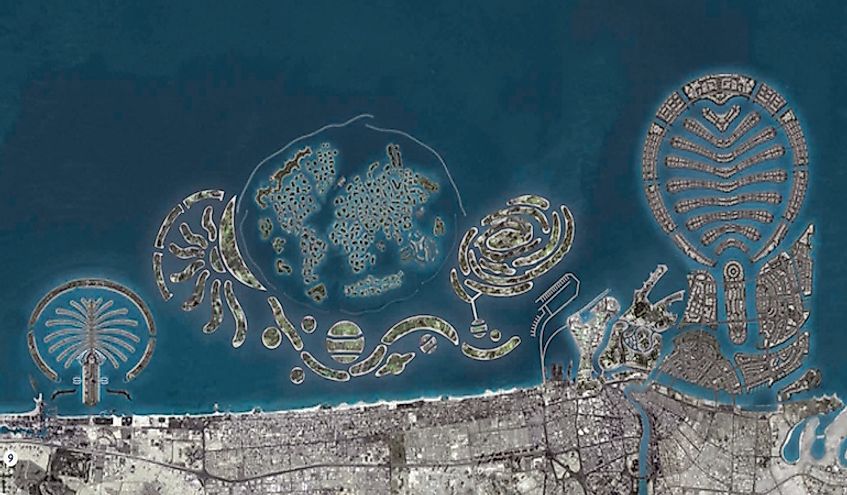
Dubai is a record-setter, a city that hosts the tallest building the world, the Burj Khalifa, eye-popping shopping malls like the Dubai Mall, hotels that re-define luxury like the Burj-al-Arab, the longest gold shopping center, the Dubai Gold Souk, and more. Adding a new feather to the cap are Dubai’s ambitious projects of the man-made islands in Dubai: The Palm Jumeirah, Deira Island, Palm Jebel Ali and the most recent “The World.” Here we present the man-made islands in Dubai and their key features.
5. Palm Jumeirah
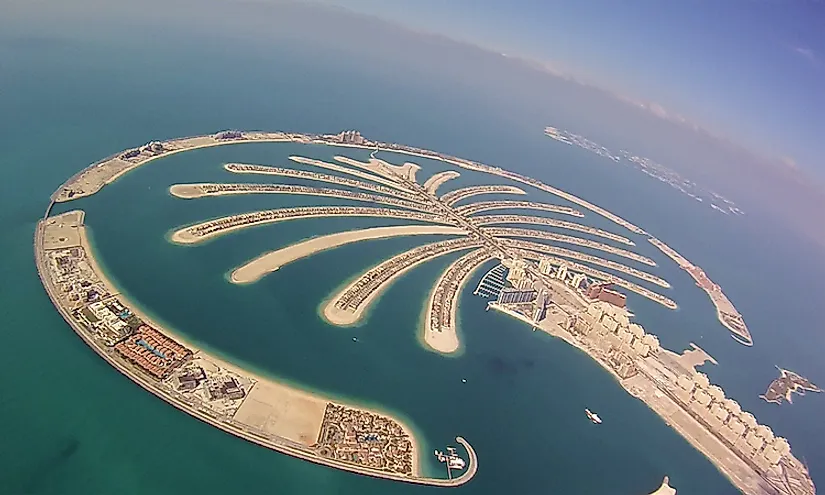
Dubai hosts one of the largest man-made islands in the world, the Palm Jumeirah, the first of the series of Palm Islands in Dubai, well-known for its palm-tree shaped design. The Palm Jumeirah was the flagship project of the Dubai-based Nakheel group, a government based company in the city. The ambitious project was first launched in 2001. The process of land reclamation was employed to create the Palm Jumeirah. Sand dredged out from the floor of the Persian Gulf bordering Dubai, was sprayed on the sea to create the islands. By the end of 2006, the first luxurious residential properties on the island were handed over to the owners. The Palm Jumeirah has been further developed to accommodate tourist, retail, and leisure facilities that make this island an attractive destination for international tourists. A 5.4 km long monorail connect the Palm Jumeirah Island to the mainland of Dubai.
4. Deira Island
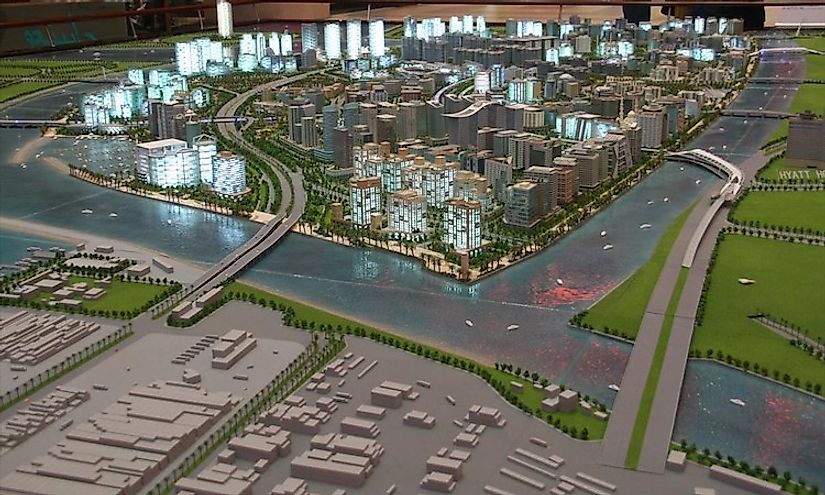
Another project of the Nakheel group, The Deira Island was initially planned to be part of the Palm Islands Dubai. Also known as the Deira Palm, the first major project on this island is planned to be launched during the first quarter of 2018. A 2 km long night souq hosting 5,300 shops accompanied by restaurants and cafes is part of the project. The islands once completed, will host about 250,000 people and numerous hotels, luxury apartments, multi-purpose buildings, and marinas. A grand mall, the Deira Islands Mall, enclosing an area of 745,000 square meters will also be established on the Deira Islands.
3. Palm Jebel Ali
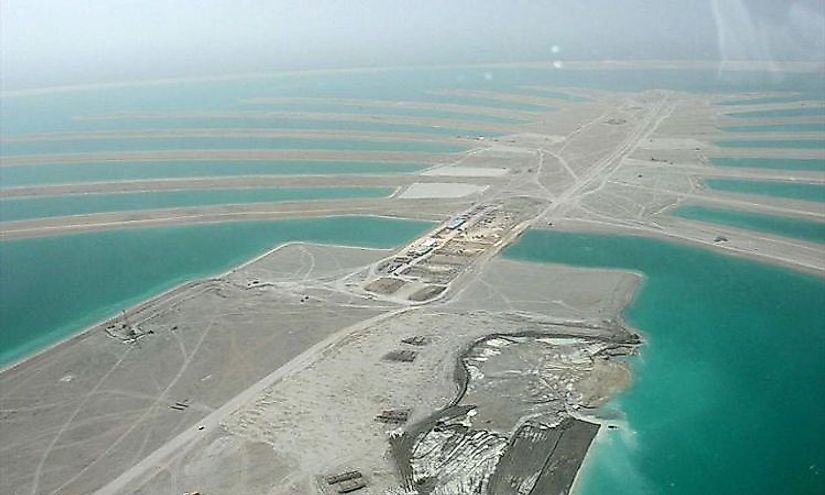
The Palm Jebel Ali is another major project in Dubai that will be 50% larger in size than the Palm Jumeirah. The key features of the Palm Jebel Ali will be a water theme park, boardwalks that will encircle the “fronds” of the palm-shaped island, spelling out a poem written in Arabic by a famous Arabian poet, several luxurious and picturesque homes built on stilts, and six marinas. Due to some financial constraints, the construction of Palm Jebel Ali is proceeding at a snail’s pace, and the first projects on these man made islands in Dubai are planned to be completed by 2021.
2. The World
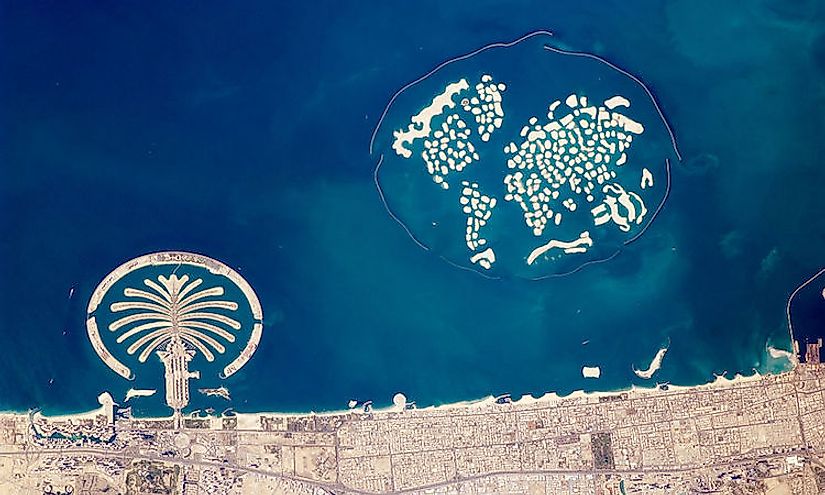
Perhaps the most ambitious project of the present times, ‘The World’ in Dubai is an artificial archipelago of small, closely spaced man-made islands that together represent the map of the world. Sand dredged from the floor of the shallow sea near the coast of Dubai have been used to build “The World.” The idea of this archipelago was the brainchild of Sheikh Mohammed bin Rashid Al Maktoum, the ruler of Dubai. The project was launched in 2003, but the pace of development slowed down in 2008 due to a financial crisis in the region. The size of the islands in “The World” range from 14,000 to 42,000 square meters and the islands are spaced at an average distance of about 330 feet. In 2015, $14 billion USD was estimated to be the overall development cost of “The World.” As of July 2012, "Lebanon" was the only island to be fully developed and used for commercial purposes.
1. Impact On Environment And Impact Of Rising Sea Levels
The man made islands in Dubai, though reminders of the ability of man to conquer all obstacles to create man made wonders are accompanied with a heavy cost. The construction of the islands has eroded the coastal soil of Dubai, altered wave action and sedimentation patterns and other patterns of nature which are associated with ecological damage and long-term environmental issues.
The coastal marine fauna of Dubai has suffered terrible consequences as the sediments stirred up during the construction process have suffocated life under the sea. The marine flora has also undergone drastic decline due to the decreased amount of sunlight filtering down the water surface. Thus, the entire food cycle of Dubai’s coastal marine life has been disturbed, leading to loss of populations of marine species from the habitat. The rock walls constructed around the Palm Islands has altered the wave pattern in the region, weakening Dubai’s shores.
The islands themselves are not safe from the forces of nature. A number of reports published in leading newspapers mention that some of the man made islands in Dubai might be shrinking and sinking due to rising sea levels triggered by climate change. The threat is especially applicable in the case of “The World” islands. However, contradictory reports exist that claim such is not the case.











